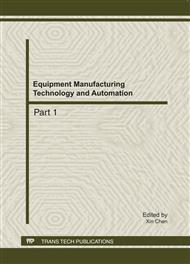p.1683
p.1688
p.1693
p.1697
p.1701
p.1706
p.1711
p.1717
p.1725
The Research of Printing Quality Based on Tri stimulus Value
Abstract:
In order to meet the limitation of density detection based on color mixing theory in traditional printing quality control, the study has established a relational model for colorimetric tri-stimulus value and ink feeding volume. It builds a colorimetric mathematical model from the offset printing proof, and uses the regression theory to correct the metring model and determine the dummy blackprint. So it can solve the problem of indeterminate solution in conversion process from tri-stimulus value to dot coverage. It fits the functional relationship through both dot area variation value and dot density variation value accessed via Yule - Nielsen formula so as to connect them. The experiment shows that it is available to get ink volume deviation with standard proof by chromaticity measurement, and there is a significant linear relationship between the corrected Neugebauer equation coefficient and tri-stimulus value. After normalizing the precision of Neugebauer equation which has been improved, the nonlinear relationship exists both in density variation value and area variation value, and the precision of the model is well and can be applied to the actual manufacture.
Info:
Periodical:
Pages:
1701-1705
Citation:
Online since:
August 2011
Keywords:
Price:
Сopyright:
© 2011 Trans Tech Publications Ltd. All Rights Reserved
Share:
Citation:


